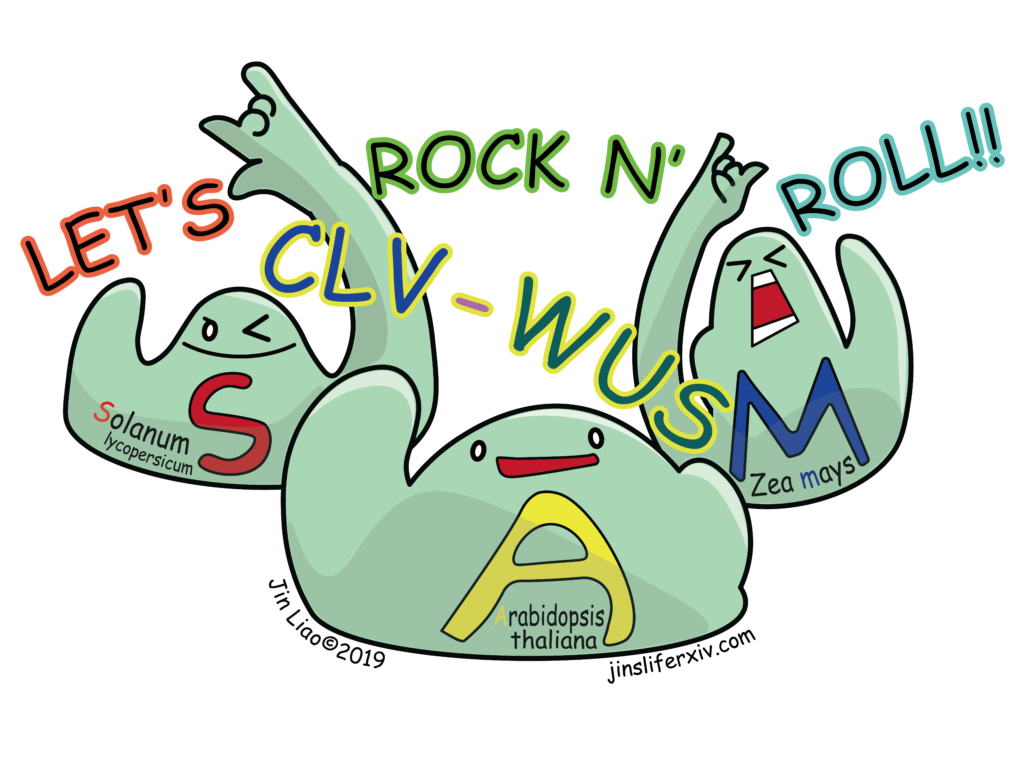
In shoot meristems, the CLAVATA (CLV)-WUSCHEL(WUS) signaling module contributes to the continuous stem cell proliferation for plant development. In Arabidopsis, core CLV-WUS signaling includes the peptide ligand CLV3 and its receptor protein kinase CLV1 together with the transcription factor WUS. These proteins form a deeply conserved negative feedback loop to regulate the stem cell homeostasis. Since both the CLV3/ CLE ligands and their receptors belong to large gene families, whether they have gene compensation and how it occurs are critical questions that plant scientists would like to understand. To learn more about this transcriptional compensation, Rodriguez-Leal et al. systematically analyzed the CLV3 paralogs and found that compensation among ligand and receptor paralogs is critical for stem cell homeostasis, but that diverse genetic mechanisms buffer conserved developmental programs. Both active and passive gene compensation effects were observed in dicot and monocot plant species. This study provides good examples to explain genetic compensation mechanisms among plants and contributes to plant bioengineering for precise control of plant stem cell proliferation.
(Summary written for Plantae, Plant Science Research Weekly)
Journal reference: Rodriguez-Leal et al, 2019, Nature Genetics
DOI: 10.1038/s41588-019-0389-8